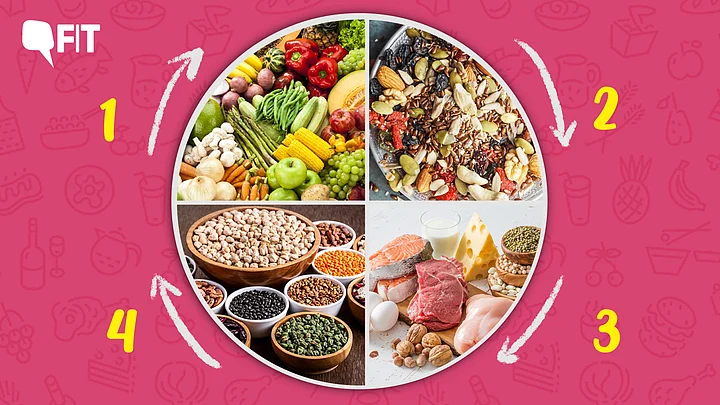Did you know that altering the order in which you eat the different components of your meal can actually help you get the most out of them?
Among fat, carbohydrates, and proteins, there indeed exists a holy order that has increasingly become a mainstay in health conversations in recent years.
Here’s simplifying nutrition sequencing and understanding if it’s truly beneficial or simply a fad.
What Is Nutrition Sequencing?
Kalpana Gupta, Clinical Nutritionist, Max Smart Super Speciality Hospital, Saket, New Delhi, describes nutrition or food sequencing as an eating pattern in which a specific food/nutrient is consumed in a particular order.
"The simple idea behind it is that it helps a person consume all the nutrients prescribed or required by the body, aiding in maintaining their overall health."Kalpana Gupta
Gupta further differentiates between traditional meal planning and nutrition sequencing. If the former tells you what to eat, the latter is about the order in which to eat it all to optimise your returns.
In a balanced diet, a person should include roti, rice, dal, salad, curd, and vegetables. But nutrition sequencing guides you to eat dal, curd, and salad first, and then have roti/rice.
The order of eating your food, as advised by experts is thus vegetables, fats, and protein, followed by carbs.
Weight Management, Obesity & Diabetes
The most crucial benefits of incorporating nutrition sequencing in your diet are weight and blood sugar control. This is useful when it comes to obesity and diabetes.
"Many studies have found that having protein and fibre before carbohydrates results in a positive outcome when it comes to glucose levels, as well as prevention of obesity. Nutrition sequencing may help in several medical conditions like diabetes, heart disease, cancer, and with post-operative and chemo-radiotherapy patients."Kalpana Gupta
However, beyond those with these specific conditions, nutrition sequencing can also help with weight loss and management.
Gupta lists down the benefits in the following manner:
Reduced craving
Reduced bloating
Better blood sugar control
Early satiety
Better nutrient absorption
How To Incorporate It in Your Diet
In most Indian households, our meals are about the simultaneous consumption of carbs with protein or vegetables.
Roti, dosa, or rice are eaten at the same time with vegetables, meat, or dal. How does one then go about following this sequencing?
An easy way is to start with salad first. Next comes raita or whatever form of curd you are having with it. Following this, you can continue with the rest of the meal.
Some other dietary changes that you can make to your lifestyle, according to Gupta, to get maximum benefits out of your meals, even if you slip up on the order of the components, are as follows:
Have small and frequent meals.
Add soluble and insoluble fibre in your diet like oats, fruits, vegetables, beans, and whole pulses.
Add proteins like low-fat milk, curd, paneer, egg, chicken, and fish.
Add complex carbohydrates like brown rice, whole wheat, and oats.
Choose cooking methods like grilling/boiling/baking, or roasting, instead of frying.
Bottomline Is Balance
Having listed all of these points, it is crucial to remember that the primary thing when it comes to nutrition is consuming a balanced diet.
Sequencing, in that sense, becomes secondary, and therefore should never gain priority over a diet that incorporates fruits, vegetables, healthy protein, and steers clear of overly processed or sugary food items.
Another point to note, as Gupta points out, is that different people with their own specific requirements would have to approach dietary sequencing differently.
For instance, cardiac patients with stents require more fibre in their diet than carbohydrates, proteins, and fats. Similarly, a person with diabetes would require more fibre than protein/carbs too for better control of their blood sugar levels.
So, nutrition sequencing depends upon a person’s clinical condition, body weight, dietary habits, and activity level, concludes Gupta, emphasising that these individual factors and requirements are always kept in mind when approaching it.
(Rosheena Zehra is a published author and media professional. You can find out more about her work here.)

